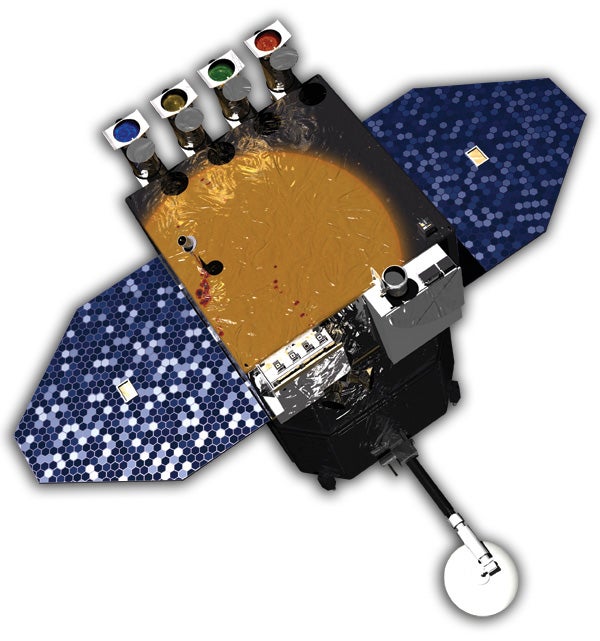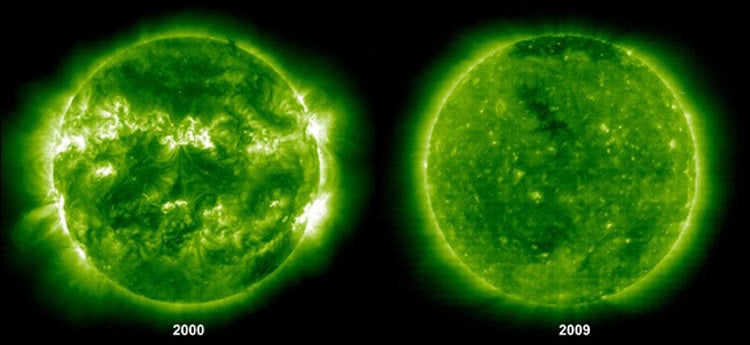Despite being our planet’s nearest star, the Sun can still perplex scientists, who don’t understand much of its behavior and its effects on our weather system. NASA plans to launch a satellite February 9 that will gather more data than ever before about the Sun and — scientists hope — begin to provide answers.
Taking off on an Atlas V rocket, the Solar Dynamics Observatory (SDO) will observe the Sun’s atmosphere and inner workings with more precision than ever before, including collecting 60 images a minute with 10 times the resolution of high-definition television. It will be the first mission of NASA’s Living With a Star Program.
“SDO will take full-disk, high-definition images of the Sun all of the time,” says project manager Liz Citrin at NASA’s Goddard Space Flight Center in Greenbelt, Maryland. “These advances will provide the data to better understand how the Sun works and will allow us to develop the tools to predict its behavior.”
Using three specific science instruments, SDO will measure how much extreme ultraviolet light the Sun emits, map plasma flows in the Sun, map the surface of its magnetic field, and image the solar atmosphere. With this information, scientists will be able to connect happenings on the solar surface with events in the interior.
Astronomers especially hope to better understand the 11-year cycle the Sun follows, alternating between violent activity and relative calm. The last maximum in the solar cycle, defined as the time when the most sunspots appeared on its surface, was in 2001-2002, and the next one should occur in 2013 or 2014. Sometimes, though, the Sun ignores the cycle, such as during the “Maunder Minimum,” a period from 1645 to 1715 when observers on Earth found few sunspots and experienced unusually cold winters. Sometimes called the “Little Ice Age,” the time indicates some kind of link between solar activity and Earth’s weather.
NASA believes the 1.5 terabytes of data SDO will send daily will help illuminate some of these mysteries. “SDO will show us just how variable the Sun really is,” says Madhulika Guhathakurta, lead program scientist for Living With a Star at NASA Headquarters in Washington. “[It] will reveal the underlying physics of solar variability.”












